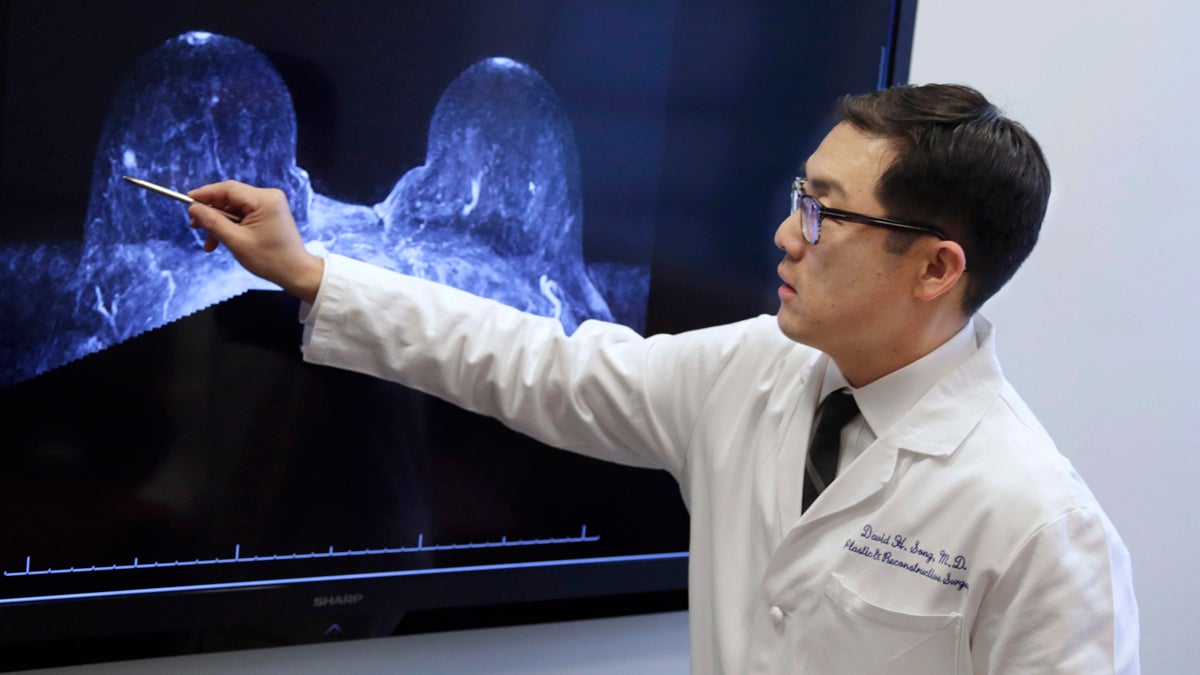Study finds most women get lengthier breast cancer radiation than necessary

(M. Spencer Green/AP Photo)
American women with breast cancer are usually treated with minor surgery to remove the lump, followed by five to seven weeks of daily radiation.
But there’s a shorter course of radiation that’s popular internationally and is only beginning to gain traction in the United States.
University of Pennsylvania radiation oncologist Justin Bekelman said there are four randomized controlled trials — medicine’s gold standard — showing that the number of radiation treatments can be cut in half without sacrificing effectiveness.
Known as hypofractionation, the approach uses a higher dose delivered fewer times.
“It’s no more toxic than the longer-duration treatments, it’s less expensive, and it lets patients get back to work or home sooner,” said Bekelman. “It lets patients put their treatment behind them faster.”
Despite these benefits, Bekelman and his team analyzed insurance data and found that only about a third of women who meet the criteria end up getting the shorter course. That’s up from about 10 percent in 2008, but still is far less than in other countries. More than 70 percent of women in Canada, for example, get hypofractionation.
“It’s hard to change practice,” acknowledged Bekelman, who was lead author of the new report. But, he said, “we have an opportunity to use a highly effective treatment that is very patient-centric, much more than it’s currently being used.”
While not entirely to blame, he said healthcare’s current fee-for-service payment structure isn’t helping.
“We probably need to change the payment system to better incentivize, or at least not disincentivize, high value cancer care,” said Bekelman.
The study, which was published today in the Journal of the American Medical Association, also found that hypofractionation cost less, saving insurance companies several thousand dollars per patient, or about 10 percent of a patient’s annual cancer bill.
Director of breast radiation oncology at Thomas Jefferson University, Nicole Simone, said she’s encouraged by the growth in hypofractionation the last few years.
In her practice, she usually reviews the medical literature with eligible patients and lets them decide — although she emphasizes that the shorter course is just as effective.
“Some patients just want to do the quickest thing possible to get back to their normal lives,” Simone said. “And some people say, ‘Well, you know, the standard fractionation has been done for so long, that’s what I’m comfortable with.'”
Not all women are good candidates for the accelerated treatments, including some women with more advanced cancer or those who are younger.
According to the National Cancer Institute, more than 230,000 women in the U.S. will be diagnosed with breast cancer this year.
WHYY is your source for fact-based, in-depth journalism and information. As a nonprofit organization, we rely on financial support from readers like you. Please give today.

